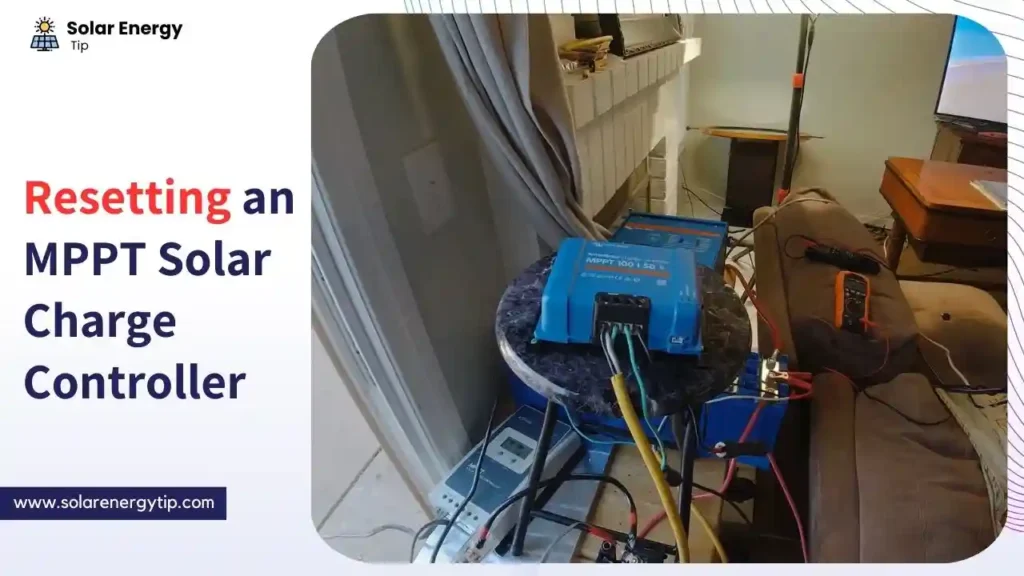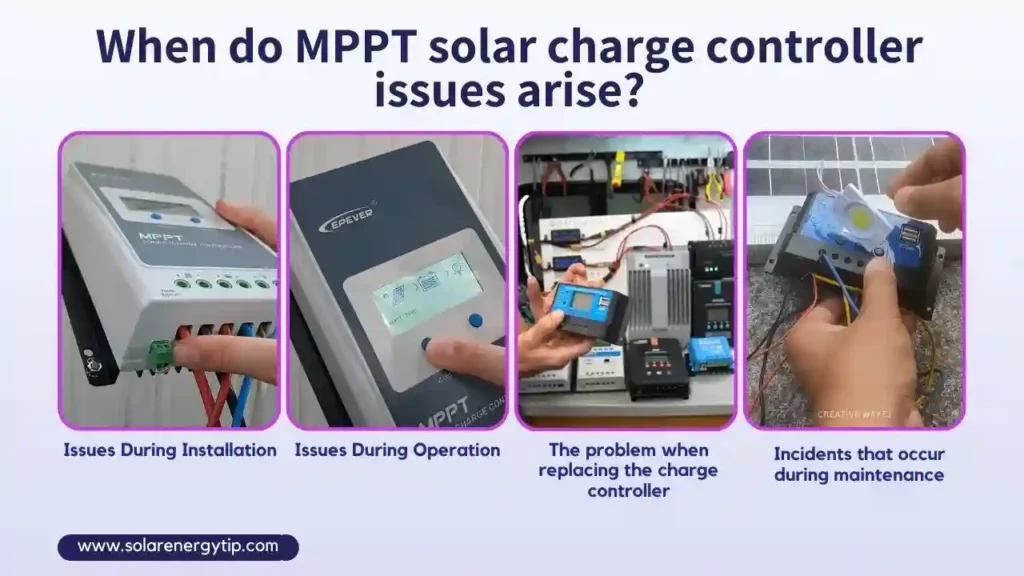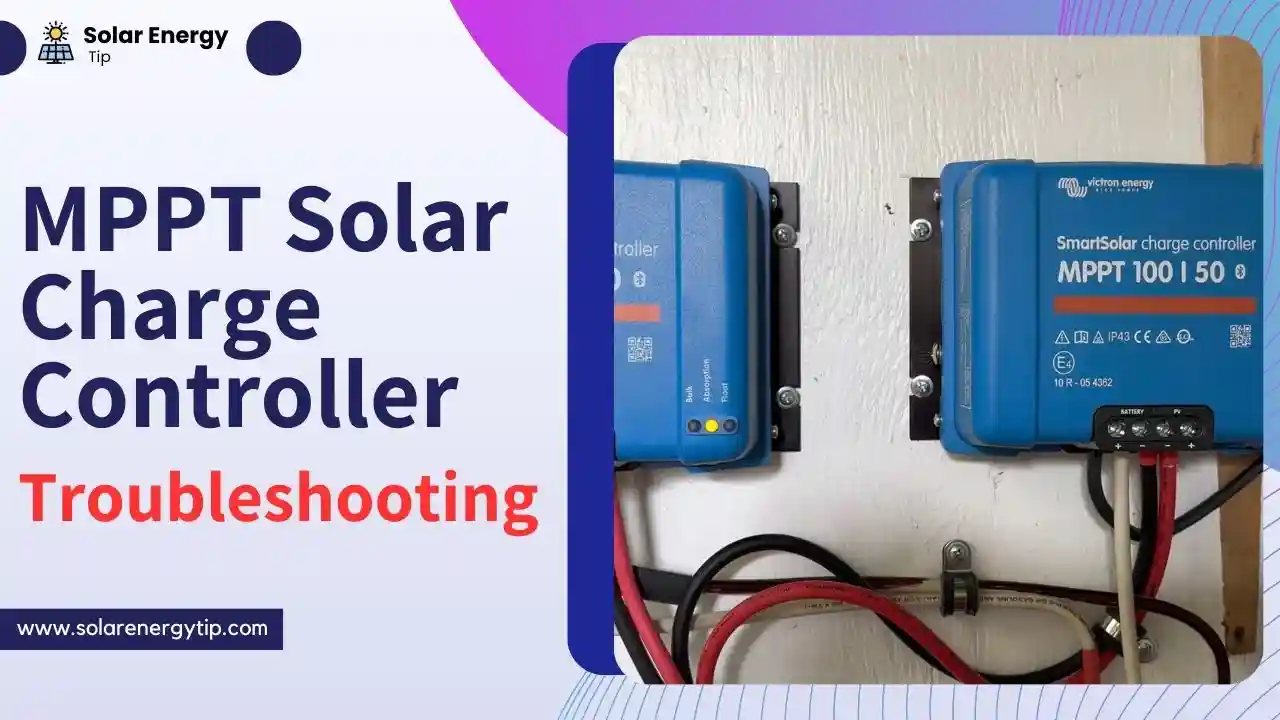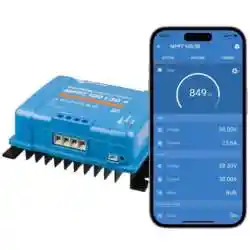If you use a solar system, then there is one component, which is a solar charge controller. A charge controller has two types: one is MPPT, and the second is PWM.
If your charge controller is MPPT, then Any time you have a problem with your MPPT solar charge controller, you can always find out what it can do.
So here I am going to give you important information about MPPT Solar Charge Controller troubleshooting.
I am going to tell you this information based on my research and the problems I have seen in multiple MPPT solar charge controllers.
- 9 Common MPPT Solar Charge Controller Troubleshooting and Solutions
- Resetting an MPPT Solar Charge Controller
- How Do I Know If My Solar Charge Controller Is Bad?
- When do such problems occur in the MPPT solar charge controller?
- Additional Tips for Preventing MPPT Solar Charge Controller Problems
- Faqs
- Conclusion
9 Common MPPT Solar Charge Controller Troubleshooting and Solutions
First of all, we discussed the most common problem for MPPT charge controllers, and along with it, we will also discuss their solution, which is as follows.
- Overheating
- Voltage Fluctuations
- Battery Issues (Overcharging and undercharging)
- Faulty Display
- Communication Errors
- Error Codes
- Incorrect Wiring
- Configuration Issues
- Load Output Short Circuit
Overheating
In some cases, the MPPT charge controller may overheat due to poor ventilation, debris blocking the cooling fans, and sometimes input loaded in the system.
This trouble can damage the solar controller after a long time.
Solution:
- Check your installation area for sufficient airflow and heat release.
- Clean ventilation ports and fans regularly.
- Ensure that your solar inputs are within the controller-rated power, which is perfect for your system.
Voltage Fluctuations
Many times, a source of irregular voltage from solar panels in the battery can damage or malfunction your controller.
So, to avoid this problem, keep the wiring connections secure and consistent. Always monitor the terminal contacts and system ground.
A bad battery can also sometimes be responsible for incorrect voltage to the charge controller.
Battery Issues (Overcharging and undercharging)
Now, talking about the battery issue,
Sometimes, improper battery type settings, bulk absorption, damaged battery terminals, and faulty battery voltage sensors all lead to overcharging or undercharging of the battery.
Due to this, we can see the battery problem on the charge controller.
Solution:
- Confirm your setting matches the batteries being used.
- When you purchase a battery, check the battery capacity for your solar system.
- Recalibrate or replace your faulty internal regulator voltage sensor.
If you use a Victron energy MPPT solar charge controller, then I suggest a video tutorial here
Faulty Display (Not Working)
Display issues are common problems for your charge controller; sometimes, it’s functioning, and it can be challenging to monitor the performance of the system.
A cracked display screen of the controller, LCD burnout, backlight, or button failure can happen after a long time.
Solution:
- In such cases, you can change the physical display of the controller.
- Perform a full reset or update the charge control software to check for problems.
Communication Errors
Communication errors are like network communication failures between the controller, monitoring systems, and connected devices that can happen over time.
So, the solution is that.
- Check the wiring and all endpoint connections.
- Updates the controller and monitoring firmware
- Retry the pairing procedures between the controller and the equipment.
Error Codes
Now, the new modern charge controllers show several error codes on the display to indicate a problem with them.
These MPPT solar charge controller error codes help to diagnose the issue with the charge controller.
Failure of components such as the fan sensor or output protection trigger is displayed as an error code on the controller display.
In such cases, without fear, you can see the table information of such error codes in the manufacturer’s manual or the website of the charge controller.
Instructions on how to troubleshoot it precede each error code in this manual.
Incorrect Wiring
Miswired batteries, solar panels, grounded references, or even connected equipment loads cause potentially dangerous charging and protection issues.
So, the MPPT solar charge controller faces a problem
At such times, always double-check that your wiring is properly connected to all terminals, is the correct gauge size, and goes all the way without excessive stress or gaps.
Configuration Issues
Many times, the configuration of the solar charge controller deviates from the optimal charging algorithm.
This is because outdated defaults, incorrect battery chemistry, or issues with charge setting temperature parameters all point to poor system performance.
Please refer to the updated manual guide for troubleshooting this solar charge controller configuration.
Load Output Short Circuit
Improperly connected inverters with solar charge controllers can cause external electrical high-load currents and damage to related systems.
In this situation, the charge controller switches off the load.
So isolate the load and check the circuit path so as not to cause an accidental short circuit.
Once located, insulate and secure the circuit poles from output to input.
Here, I give you the best MPPT charge controller if you want to replace it.
Victron Energy SmartSolar MPPT
Item Weight 1.28 Kilograms
100V 30 amp 12/24-Volt Solar Charge Controller comes with Bluetooth
Resetting an MPPT Solar Charge Controller

If you see that your charge controller is not functioning properly, then a simple reset process of the solar charge controller.
It may help you resolve the issues.
So, here, I will tell you about the reset process in short.
- First of all, turn off the charge controller from the power source.
- Then, disconnect the charge controller from the battery and solar panels.
- After that, wait for 5-10 minutes to ensure that the remaining charge is completely discharged.
- Now, reconnect the solar panels and battery to the charge controller.
- Finally, turn on the charge controller, monitor all operations, and see if the issue has been resolved.
How Do I Know If My Solar Charge Controller Is Bad?
Now, we will discuss a few signs to look for in the MPPT solar controller not functioning.
By which we know that our charge controller is neither good nor bad.
- The battery is now charging or slowly charging
- The solar panel voltage is not tracked, or it fluctuates significantly.
- The charge controller displays error codes or error indicators.
If you notice any of these signs, it may indicate a problem with your MPPT solar charge controller.
When do such problems occur in the MPPT solar charge controller?

Here I am telling you that problems occur in the MPPT solar charge controller as below point.
- Issues During Installation
- Issues During Operation
- The problem when replacing the charge controller
- Incidents that occur during maintenance
Additional Tips for Preventing MPPT Solar Charge Controller Problems
For proper functioning or prevention of the MPPT solar charge controller, I suggest some additional tips.
Regular Maintenance: Checking and inspecting all connections and cleaning controllers and their components periodically to remove dust and debris.
Proper installation: Install the controller in a well-ventilated area to keep it from direct heat and moisture.
Ensure proper grounding of the controller. Follow the manufacturer’s instructions about the installation process carefully.
Upgrading Firmware: Check if the controller firmware is up-to-date.
Faqs
What is the average cost of repairing an MPPT solar charge controller?
A very rough estimate of a simple repair charge controller cost is $50, and component replacements go up toward $200. Complex damage repairs can cost up to $500.
What is the lifespan of an MPPT solar charge controller?
Generally, the MPPT solar charge controller’s lifespan is variable, but depending on its maintenance and usage, we can use it for 10 to 20 years.
What is the warranty on MPPT solar charge controllers?
MPPT solar charge controllers come with a year of 2 to 5 warranty. Be sure to check the warranty when choosing your exact controller model.
What should I do if my controller is not compatible with my solar panels?
For that, consult a skilled professional to find a compatible replacement for your solar charge controller or consider upgrading your solar panels.
Why is my MPPT charge controller showing low or fluctuating PV input voltage?
If your MPPT solar charge controller shows low or fluctuating PV input voltage, then check for loose, corroded, and damaged PV wire connections.
Also, ensure that the cables are of the correct gauge, clean them if dirty, and check the proper shedding orientation.
Can I reset faults or clear error codes on my MPPT controller?
In the MPPT charge controller, many error codes require manual resets to restart after solving the problem.
Some defects may indicate hardware issues that require service.
Conclusion
In conclusion, the MPPT solar charge controller is a very complex device, which is very important for an Off-Grid system.
However, sometimes, problems arise because it is improperly configured and maintained.
By understanding the above common issues that we discuss in this article.
Also, if you face any other problem with your MPPT solar charge controller, then comment on me, and I will reply to you.


